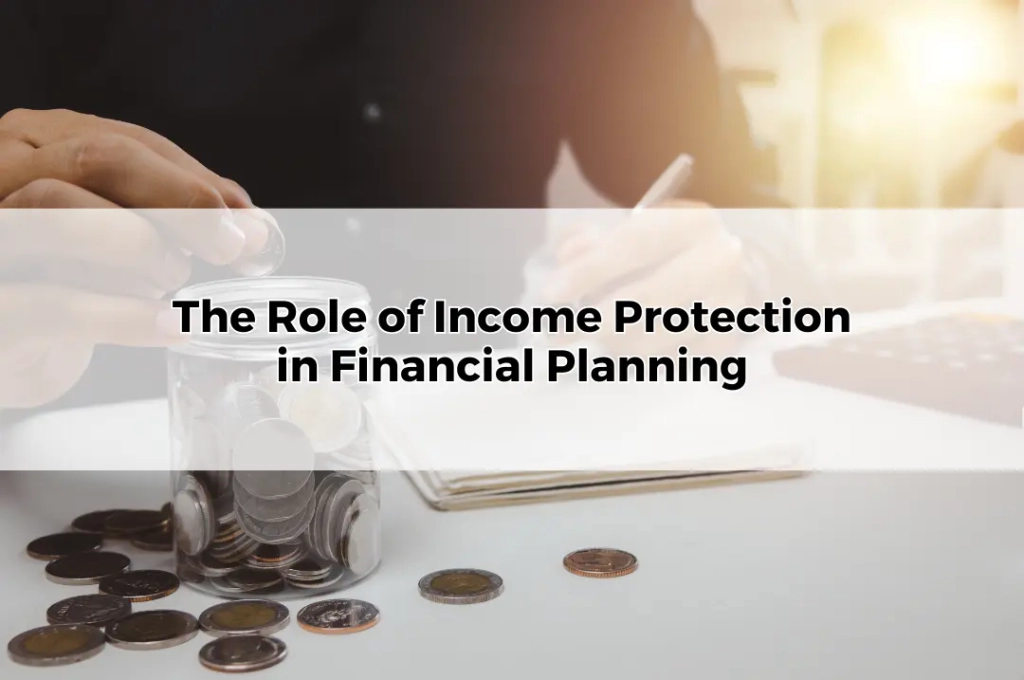The Role of Income Protection in Financial Planning
Table of Contents
ToggleIncome protection insurance is a financial safety net designed to replace a portion of your income if you are unable to work due to illness or injury. It ensures that you can continue to meet your financial obligations even when your ability to earn an income is compromised.
Incorporating income protection into your financial planning is crucial. It provides a buffer against unexpected events that can disrupt your income stream, helping you maintain financial stability and peace of mind.
Understanding Income Protection Insurance
How It Works
Income protection insurance pays a regular benefit, typically up to 75% of your pre-tax income, if you are unable to work due to a qualifying condition. The payments continue until you can return to work or until the end of the policy’s benefit period.
Types of Income Protection Policies
There are various types of income protection policies available, including indemnity value policies, which pay a benefit based on your income at the time of the claim, and agreed value policies, which pay a predetermined amount agreed upon when you take out the policy.
The Need for Income Protection
Risk of Income Loss
The risk of losing your income due to illness or injury is significant. Without a regular income, meeting everyday expenses and long-term financial commitments can become challenging, leading to financial stress.
Financial Impact of Disability or Illness
A serious disability or prolonged illness can have a devastating financial impact. Income protection helps mitigate this risk by providing a steady income stream, ensuring you can cover essential costs and maintain your lifestyle.
Benefits of Income Protection Insurance
Regular Income Replacement
One of the primary benefits of income protection insurance is the regular income replacement it provides. This helps you cover day-to-day living expenses, such as mortgage or rent payments, utilities, and groceries, even when you are unable to work.
Coverage of Living Expenses
Income protection insurance can also help cover additional living expenses that may arise due to your illness or injury, such as medical bills, rehabilitation costs, and home modifications. This ensures you have the financial support needed to focus on recovery.
Income Protection vs. Other Insurance Types
Comparison with Life Insurance
While life insurance provides a lump sum payment to your beneficiaries in the event of your death, income protection insurance offers ongoing income replacement during your lifetime if you are unable to work. Both serve different purposes and are important in comprehensive financial planning.
Comparison with Health Insurance
Health insurance covers medical expenses, but it does not replace lost income. Income protection insurance complements health insurance by ensuring you have a source of income to cover living expenses while you recover.
Determining the Right Coverage
Assessing Your Income Needs
Determining the right level of income protection coverage involves assessing your current income and financial obligations. Consider your monthly expenses, debt repayments, and any other financial commitments to calculate the coverage you need.
Considering Additional Expenses
In addition to your regular expenses, consider any additional costs that may arise if you are unable to work, such as increased medical expenses or the need for home care. Ensuring your policy covers these costs is essential for comprehensive protection.
Policy Features and Options
Waiting Periods
The waiting period is the time you must wait after becoming unable to work before your income protection benefits start. Common waiting periods range from 14 days to two years. Choosing the right waiting period can balance affordability and financial needs.
Benefit Periods
The benefit period is the length of time you will receive income protection payments. Benefit periods can range from two years to until retirement age. Selecting an appropriate benefit period depends on your financial situation and risk tolerance.
Premium Structures
Income protection policies can have different premium structures, including stepped premiums, which increase with age, and level premiums, which remain constant. Understanding these structures helps in choosing a policy that aligns with your long-term financial plan.
Tax Advantages of Income Protection
Tax Deductibility of Premiums
One of the significant advantages of income protection insurance is that the premiums are generally tax-deductible. This reduces the overall cost of the policy and makes it a tax-efficient way to protect your income.
Taxation of Benefits
While the premiums are tax-deductible, the benefits received from an income protection policy are considered taxable income. It’s important to factor this into your financial planning to ensure you have sufficient after-tax income during your benefit period.
Choosing an Income Protection Policy
Evaluating Insurance Providers
Choosing the right income protection policy involves evaluating various insurance providers. Consider their reputation, financial stability, and customer service. Comparing policies from different providers helps you find the best coverage for your needs.
Reading the Fine Print
Carefully reading the policy documents is essential to understand the terms and conditions, exclusions, and limitations of the coverage. Knowing what is and isn’t covered helps avoid surprises at claim time.
Common Exclusions and Limitations
Pre-existing Conditions
Most income protection policies have exclusions for pre-existing conditions, which are medical conditions that existed before you took out the policy. Understanding these exclusions is crucial for setting realistic expectations about your coverage.
Occupational Exclusions
Certain high-risk occupations may be excluded from standard income protection policies or may attract higher premiums. If you work in a high-risk job, it’s important to find a policy that provides adequate coverage for your specific situation.
The Role of Financial Advisers
Importance of Professional Advice
A financial adviser can provide invaluable guidance in selecting the right income protection policy. They can help you understand your coverage needs, compare policies, and integrate income protection into your broader financial plan.
How to Choose the Right Adviser
Choosing the right financial adviser involves researching their qualifications, experience, and client reviews. Look for an adviser who specialises in insurance and has a solid understanding of income protection options.
Regular Review and Adjustment of Policies
Keeping Coverage Up to Date
Regularly reviewing your income protection policy ensures that it remains aligned with your current financial situation and needs. Life changes such as marriage, the birth of a child, or a change in employment can impact your coverage requirements.
Adapting to Life Changes
As your life evolves, so should your income protection policy. Adjusting your coverage to reflect changes in your financial situation ensures that you remain adequately protected and can continue to meet your financial obligations.
Income protection insurance is a critical component of financial planning in Australia. It provides a safety net that ensures financial stability and peace of mind during times of illness or injury. By understanding the different aspects of income protection, from determining the right coverage to choosing the best policy, you can safeguard your financial future and maintain your standard of living, no matter what life throws your way.









